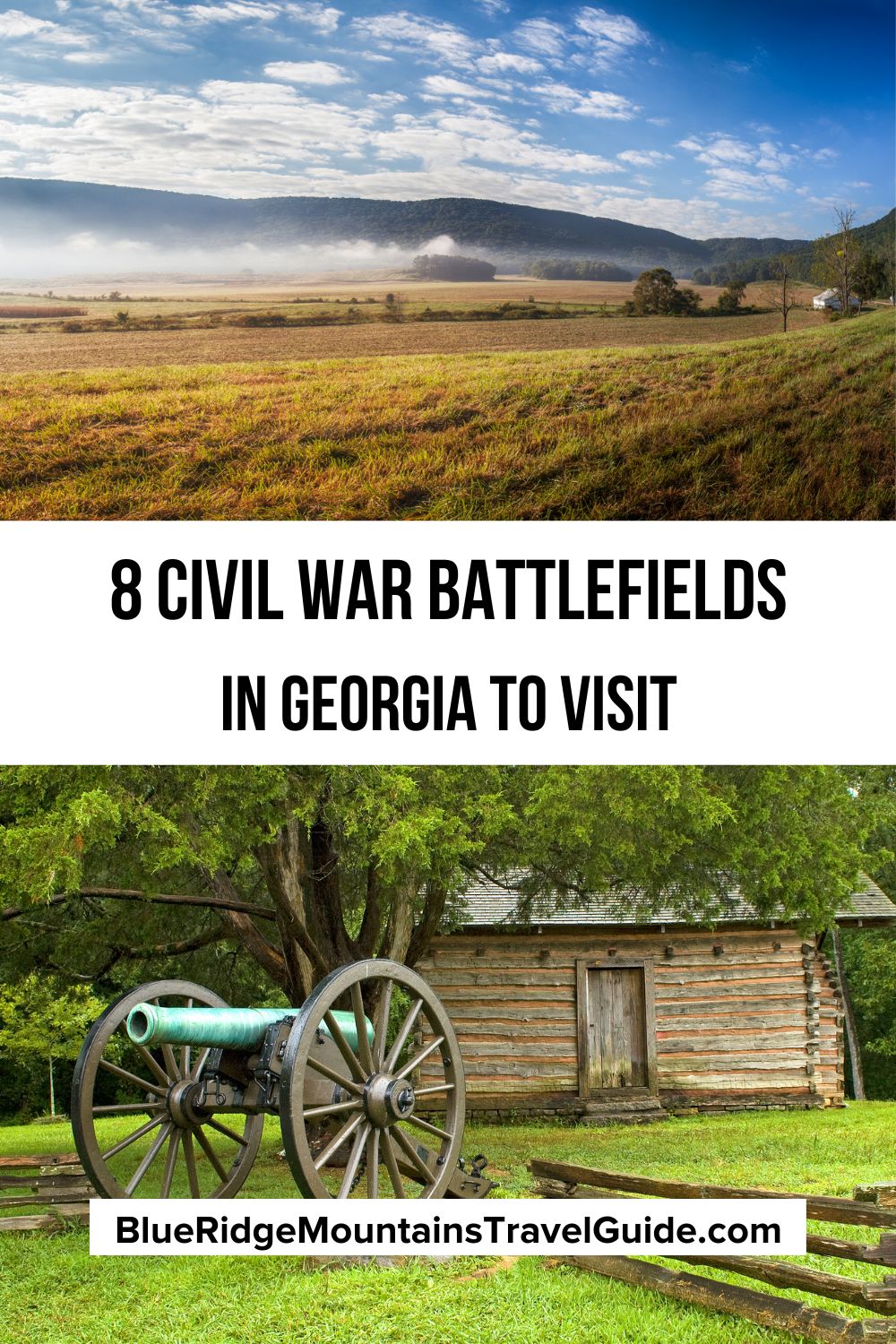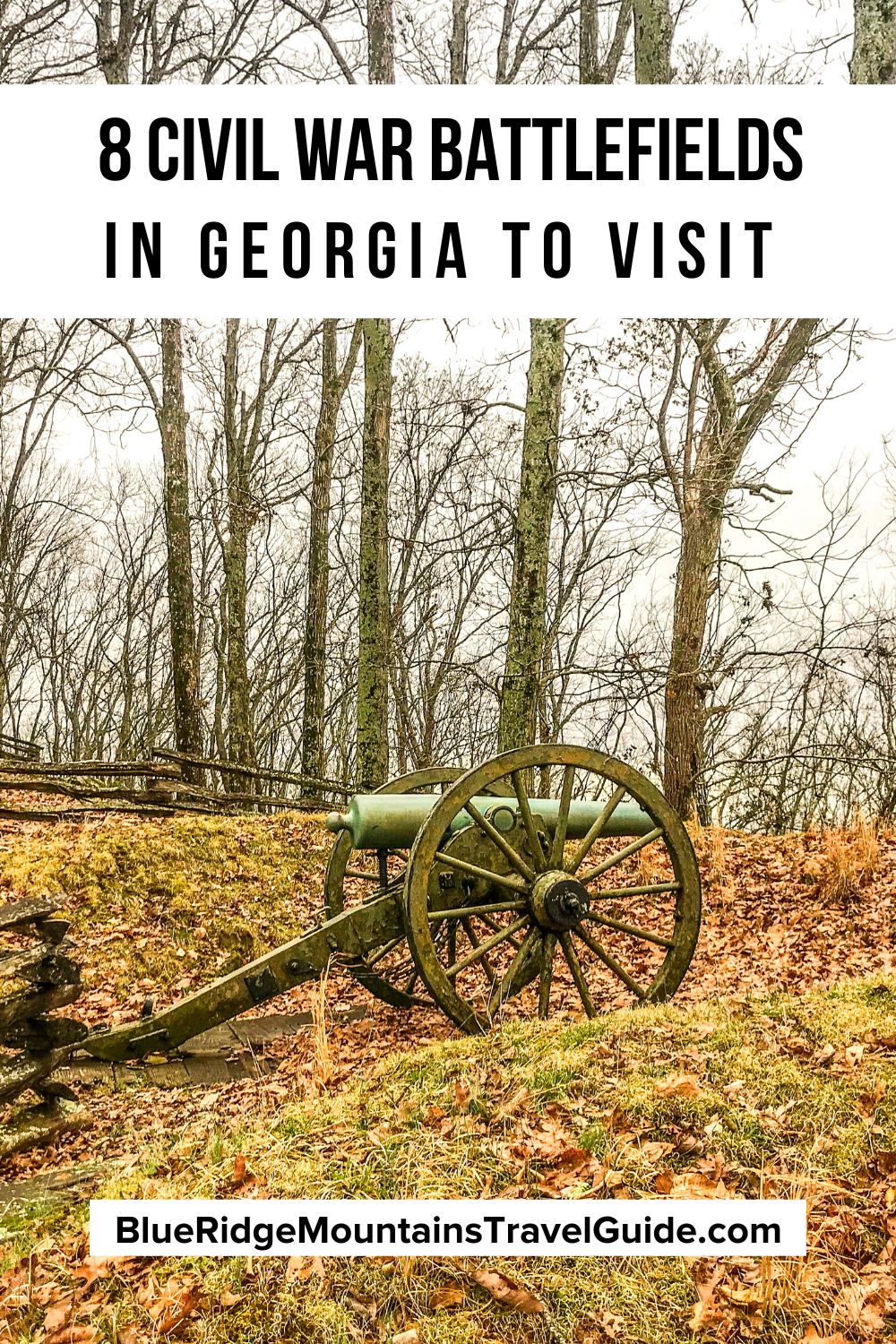The state of Georgia was home to some of the most famous Civil War battles, and subsequently has many fascinating historic sites for visitors to explore.
The Civil War battlefields in Georgia span from Lookout Mountain in the west to Savannah in the east, along the route the Union Army took to defeat the Confederacy between 1863 and 1864.
Most of the major Civil War sites in Georgia were part of the Atlanta Campaign of 1864, which included the battles fought in Northwest Georgia under the leadership of Union Major General William T. Sherman.
There were some 550 Civil War battles in Georgia (including skirmishes), with the majority spanning the two years before the end of the war.
Today, many of these Civil War battlefields are accessible to visitors through Georgia State Parks & Historic Sites.
Civil War history buffs can learn more about these historic sites via battlefields tours, historic reenactments, and hiking trails with interpretive signs.
Read on to learn more about the 8 most prominent battlefields from the Civil War in Georgia, including details on the history of the battles as well as an overview of the activities available at each site.
READ MORE: 101+ Things to Do in North Georgia
Civil War Battlefields in Georgia Guide
- Chickamauga and Chattanooga National Military Park
- Dug Gap Battle Park
- Fort McAllister State Historic Site
- Fort Tyler of The Battle of West Point
- Gilgal Church Battle Site
- Jefferson Davis Memorial State Historic Site
- Kennesaw Mountain National Battlefield Park
- Pickett’s Mill Battlefield State Historic Site
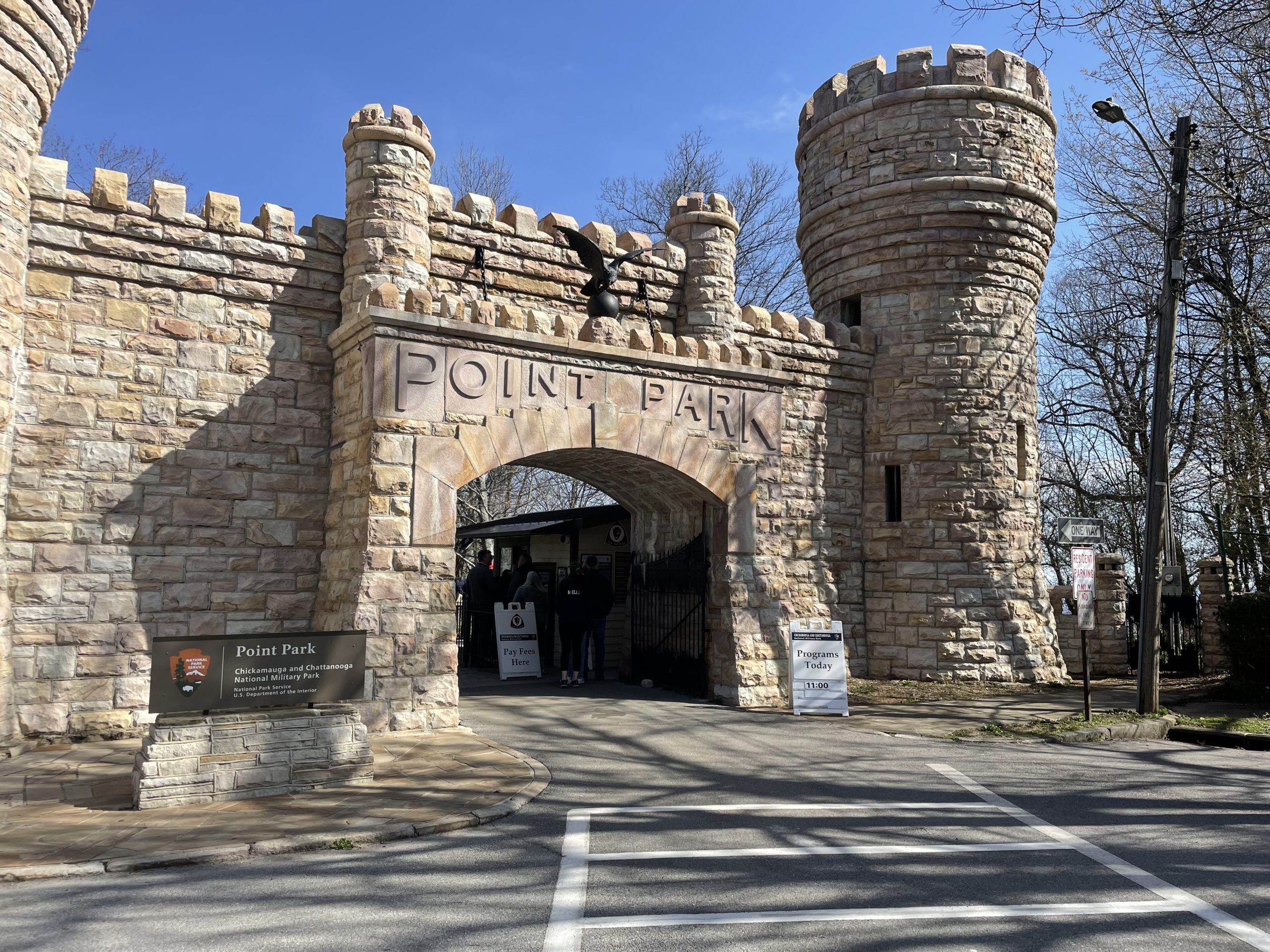
1. Chickamauga and Chattanooga National Military Park
3370 Lafayette Rd, Fort Oglethorpe GA • 706-866-9241
The Chickamauga & Chattanooga National Military Park marks the location of one of the most important American Civil War battles.
Georgia’s Civil War battlefields are known for creating a pathway for the Union Army into Atlanta, which ultimately led to the end of the bloody war.
In mid-September 1863, General Braxton Bragg (of the Confederate Army of Tennessee) met Union troops in what is now Fort Oglethorpe GA. The Confederates hoped to reclaim Chattanooga, but were unsuccessful.
Led by “The Rock of Chickamauga,” Major General George H. Thomas, the Union line at Horseshoe Ridge lasted until nightfall.
This gave the Union Army a chance to drive Bragg out of North Georgia, creating space for Major General Sherman’s attack on Atlanta.
More than 15,000 men died on each side of this major Civil War battle, making it the second bloodiest of all the American battlefields. It was the first military park in the country, authorized by the U.S. government in 1890.
Today, the park includes 9,000+ acres of battlefields, monuments, ranger talks, and hiking trails, with plenty of educational and recreational options for visitors.
Point Park in Chattanooga TN and the battlefield area in the small town of Fort Oglethorpe GA are the best places to learn more about the history of the Georgia battlefield.
READ MORE: The 20 Best Hiking Trails in the Chattahoochee National Forest

2. Dug Gap Battle Park
West Dug Gap Battle Rd, Dalton GA • 800-331-3258
The Dug Gap Battle Park in Dalton was the site of one of the first Civil War battles of the Atlanta Campaign, the Battle of Rocky Face Ridge.
After retreating from Chattanooga TN, the Confederate Army (led by General Joseph E. Johnston) took refuge in the hills of Dalton.
On May 7, 1864, Sherman’s Union forces met them in the North Georgia mountains, starting a multi-day battle that that almost worked in favor of Johnston.
Fortunately, General James McPherson discovered an unprotected gap in the mountainside at Snake Creek. This allowed Sherman’s troops to sneak behind the Confederate Army and threaten to cut off their railroad supply lines.
Johnston’s unit withdrew to Resaca GA, which left General Sherman free to continue on towards Atlanta.
The Dug Gap Battle Park includes ruins of stone fortifications along the trail, offering an unedited look at the history of the Civil War battlefield.
READ MORE: The 15 Best Historic Sites in Georgia

3. Fort McAllister State Historic Site
3894 Fort McAllister Rd, Richmond Hill GA • 912-727-2339
The Fort McAllister State Historic Site is one of the most well-preserved Civil War sites in Savannah GA. Fort McAllister was the site of two different Civil War battles in 1863 and 1864.
The first battle was really just a series of naval attacks by the Union, which were meant to test their new warships’ capabilities before embarking upon a major attack on Charleston SC.
The second battle took place on December 13, 1864, as part of Sherman’s March to the Sea.
The fort, which was one of the most strategically important sites in Savannah, was only being defended by a small group of Confederate soldiers.
It was quickly taken over by Sherman’s men, providing them with a vital path to the Atlantic coast. The Union Army had run low on supplies after their march from Atlanta, and Sherman hadn’t received any mail for 6+ weeks.
Once they opened a reliable supply line, Sherman was able to take Savannah by Christmas, just 15 days after capturing Fort McAllister.
Located on the Ogeechee River, the site includes earthwork fortifications, cannons, barracks, and more.
Today, the State Park is a great place for fishing, camping, and boating in the beautiful Savannah marshes.
READ MORE: The 10 Best Kayaking Rivers in Georgia

4. Fort Tyler of The Battle of West Point
1105 6th Avenue, West Point GA • 706-884-8671
The Fort Tyler Historic Site in West Point GA was home to the last stand of the Confederate Army in the Atlanta Civil War battles.
The Fort, which was an important railway center, was one of two crucial Chattahoochee River crossings that Union General James H. Wilson wanted to destroy.
After capturing Montgomery AL, Wilson split his forces between the two crossings at Fort Tyler and Columbus.
Union Colonel Oscar Hugh La Grange, leading the charge to West Point, approached the fort on April 16, 1865.
The battle took place quickly over the span of a few hours. Union soldiers kept the small Confederate militia busy with shelling until La Grange arrived in the afternoon.
He quickly ran to the bridge before it could be burned, but was stopped when a close-range cannon killed his horse and knocked him to the ground.
The Union Army eventually made it across the bridge, where they overtook the rebel soldiers, killing the last Confederate General, Robert Tyler.
Fort Tyler is now part of an official Civil War Discovery Trail site. The trail, which was started by the Civil War Preservation Trust, gives visitors a chance to explore the famous Civil War sites in Georgia and surrounding states.
READ MORE: The 15 Coolest Covered Bridges in Georgia

5. Gilgal Church Battlefield
667 Kennesaw Due West Rd NW, Kennesaw GA • 770-428-4815
The Battle of Gilgal Church is another clash that took place during the Atlanta Campaign. It was one of 3 smaller battles that occurred between June 10 and 19 between Lost Mountain and Brushy Mountain.
The battles came during a series of strategic maneuvers on both sides as the Union Army tried to find a place to cross the Etowah River.
In the Gilgal Church battle, Union soldiers encountered a Confederate division, who quickly fled south to Gilgal Church.
Confederate soldiers dismantled the church, using the wood and pews to create defensive structures.
They eventually drove the federal soldiers from the battlefield, suffering very few casualties on the Southern side.
Johnston’s army won the small battle, but was eventually forced to retreat to Kennesaw Mountain.
This retreat allowed Sherman’s army to push further into the state, moving him a few miles closer to Atlanta.
READ MORE: Exploring the Dark History of the New Echota Historic Site in Calhoun GA
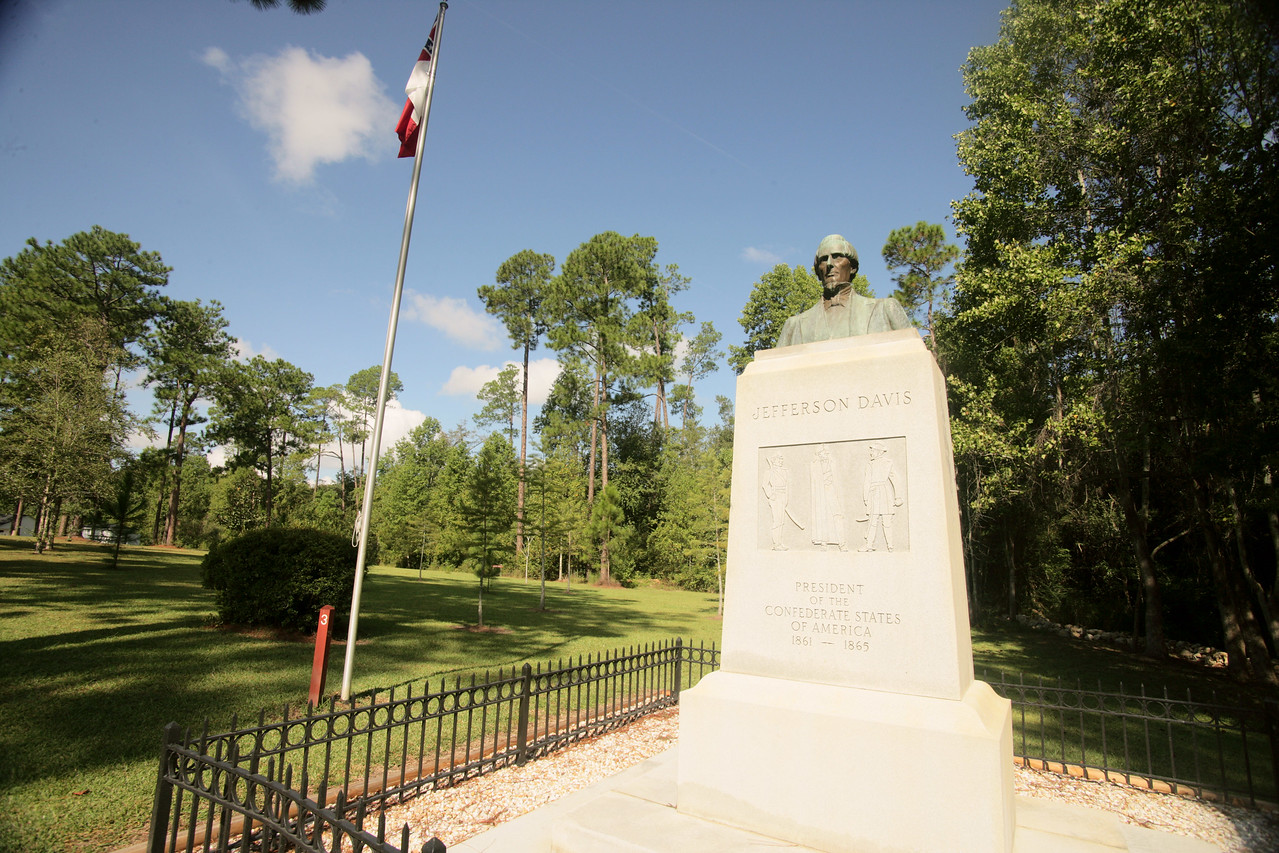
6. Jefferson Davis Memorial State Historic Site
338 Jeff Davis Park Rd, Fitzgerald GA • 229-831-2335
President of the Confederacy Jefferson Davis and company crossed the Savannah River into Georgia on May 3, 1865.
They hoped to meet sympathizers in the west, then rejoin the Confederate forces and continue fighting against Sherman’s Army.
The group stopped to camp in a forest in what is now Fitzgerald GA. While they slept, they were surrounded by two small groups of Union soldiers, each of which was unaware of the other.
Gunfire erupted, with the Federal troops shooting across the forest at each other before they realized what was happening. When they realized their mistake, they chased after Davis, who attempted to run to a nearby creek.
He was ultimately taken to Virginia and held prisoner for two years before being released.
The Jefferson Davis Memorial site was deeded to the State of Georgia in 1920, and the United Daughters of the Confederacy created a monument on the spot he was captured.
Today, the small battle site includes a museum, picnic site, monument, gift shop, and short nature trail. The museum contains a bust of Davis, as well as many other Confederate artifacts.
READ MORE: 40 Facts About the History of the Banjo (From Africa to Appalachia)
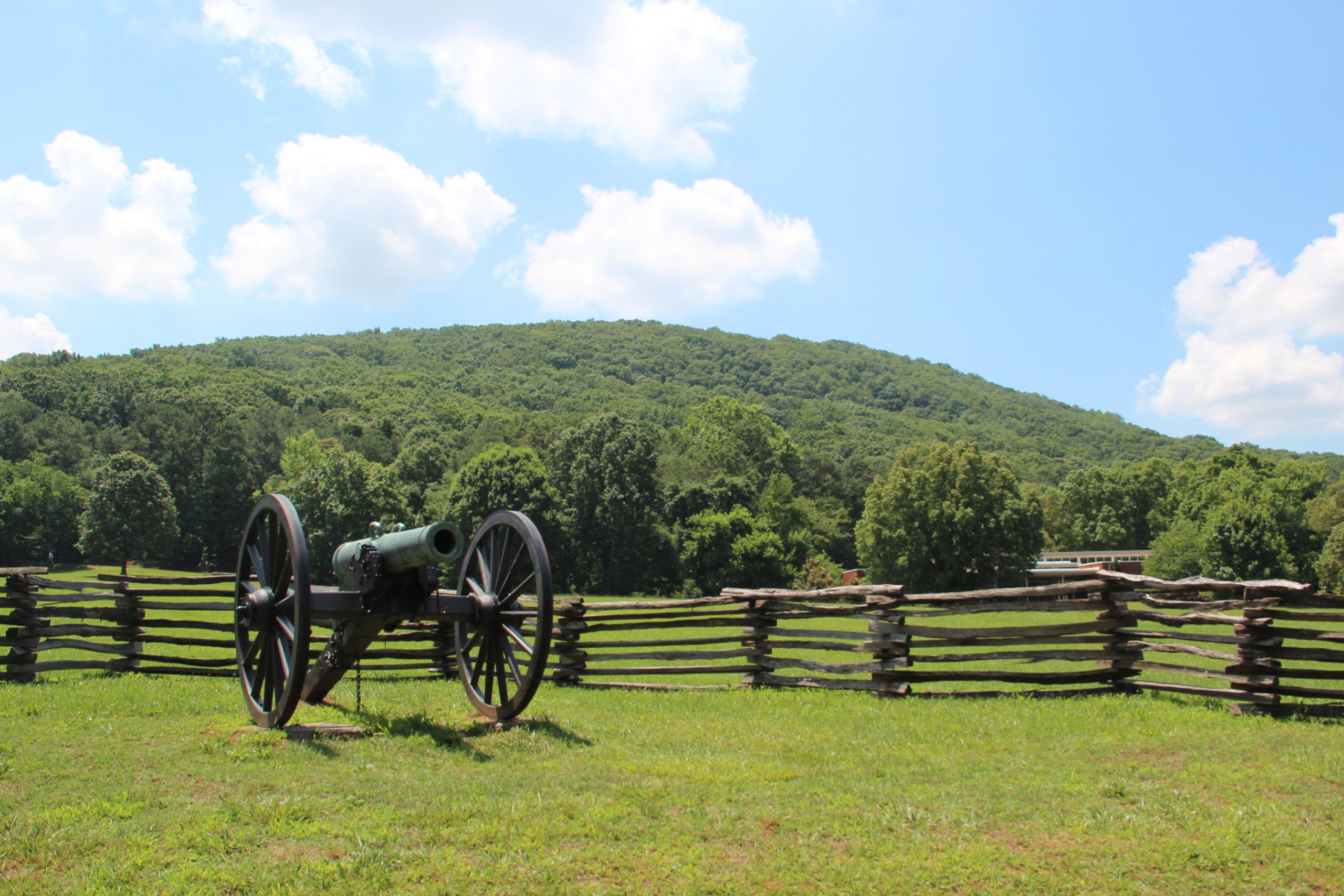
7. Kennesaw Mountain National Battlefield Park
900 Kennesaw Mountain Dr, Kennesaw GA • 770-427-4686
The beautiful Kennessaw Mountain National Battlefield Park preserves and protects the history of the Civil War Battle of Atlanta and the Appalachian people who lived around Kennesaw Mountain.
The National Battlefield Site was created in February 1917 under President Woodrow Wilson.
It was later added to the National Park Service by President Franklin D. Roosevelt.
Kennesaw Mountain was an important landmark of the Civil War battle for Atlanta that was used as a defensive position by the Confederate Army. The Battle for Kennesaw took place between June and July of 1864.
Almost 200,000 men fought in the battle, which consisted of a direct frontal assault in Sherman’s efforts to get the Union Army to Atlanta. Over 5,000 men died on the bloody battlefield.
Today, the Kennesaw National Battlefield includes a Visitor’s Center, Peter Valentine Kolb’s farm house, museum, theater, and many different hiking trails.
Stop by the museum or at the many different interpretive signs along the hiking trails to learn more about this important Atlanta battle.
READ MORE: The 25 Best Day Trips From Atlanta GA

8. Pickett’s Mill Battlefield State Historic Site
4432 Mt Tabor Church Rd, Dallas GA • 770-443-7850
After the Union wins in Chattanooga and Chickamauga, the Federal Army was met in the Battle of Pickett’s Mill. The Confederates met them on May 27, 1864, hoping to stop their drive to Atlanta.
The Pickett’s Mill Battlefield Historic Site is located in Dallas GA, just a few miles northwest of Atlanta. Its close proximity to the city makes it one of the best places for exploring the history of the Civil War in Georgia.
Having been stopped at the Battle of New Hope Church, the Federal troops attempted to make a move around the Confederate line. They hoped to outflank them, but were met by 10,000 troops led by General Cleburne.
Over 1,000 Union soldiers died on this Civil War battle site, while only 500 Confederate soldiers were lost.
Today, the Pickett’s Mill Battlefield Historic Site is open 7 days a week from 9-5, with paid admission or an annual pass. Visitors can explore the roads and ravines used by the soldiers in this .
The 765-acre historic site includes a playground, group shelter, visitor’s center, and access to hiking trails through the museum. –by Amy Lewis; lead image via Canva


